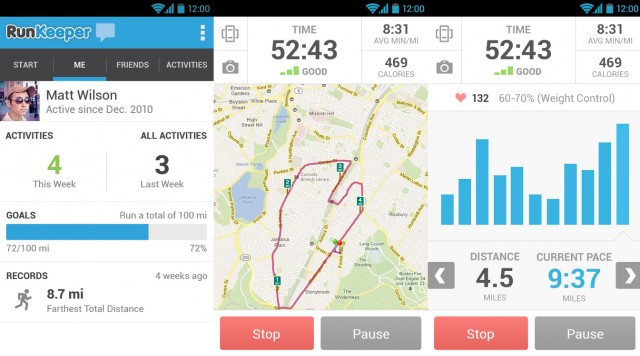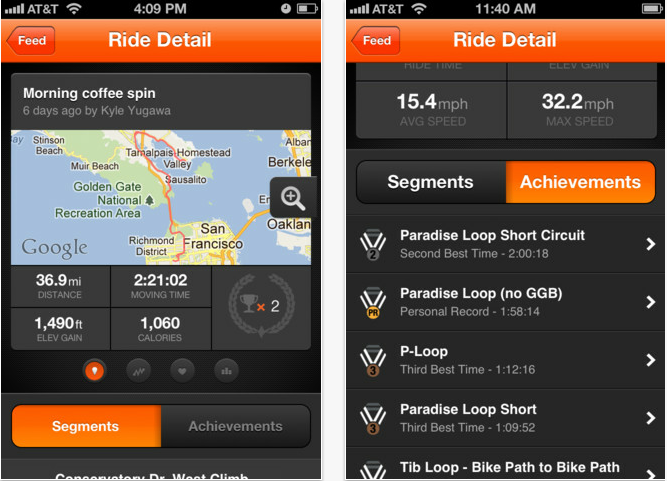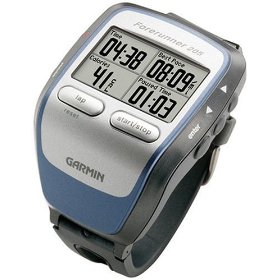
I have been training to run a half marathon in 1:25 for the past 9 weeks. The training has gone well, I may have actually over trained a bit, running as much as 17 miles last Sunday, but I think I am fine. I took a couple of extra rest days this weekend. The race is a week away; however, I did not register and don’t have a number. I had a couple of different options for obtaining a number, from friends that weren’t planning on using theirs, a couple of acquaintances at ING which is sponsoring the race, etc., but all of those options have now fallen through and the last day to register was last night. So I decided since I have put in all this effort in training, I should see if I am able to attain my goal, even if I won’t be able to participate in the event. I have never raced a half marathon distance before, only while running a full marathon, but I’m very confident that I can do it in less than 1:30. I do think that my goal of 1:25 is going to be very difficult. That’s why it’s a goal though, it’s not just something I could do at anytime without putting forth a good bit of effort. So since I don’t have a number, I’m going to run my own race, which is what running is all about anyways, right? I have two options for where to compete in my personal race, running 13.1 miles on the track or on the road. I ran 13.1 miles in a trail race about a month ago, running it in 1:34, so I don’t need to race on a trail. That day the trail was very saturated too, so I’m confident that I could have run it under 1:30 in normal conditions. I know my body, my abilities, and my race pace. Apparently I just don’t know how to obtain a free race entry.
I honestly don’t know which option would be tougher, running my personal half-marathon race on a track or road. The track is flat and I would be able to concentrate on my splits, even every 400m if I needed to, but I get very bored running on a track. I haven’t run further than 5 miles on a track or treadmill in probably over 10 years, so doing 13.1 miles on the track for time would be a challenge for me. Also, I wonder if running that long of a distance on a track would decrease my overall speed on the run because of the constant turning. It makes sense to me, but I’ve done more orienteering courses than most normal people. I’ve never claimed that my life thus far has been normal, it’s been purposely engineered that way. I do have a little more confidence in my abilities on the track because in my training I ran intervals there, many of which were for longer distances at race pace. I have confidence in my physical toughness for a track, but mentally I’m not sure if the perpetual running in circles without going anywhere would eventually begin to demotivate me.
It’s tough to be motivated to attain your goals if you are constantly working to reach them but end up going nowhere. All I can say is keep running harder…but I guess that wouldn’t help on a track. How about, if your going no where, try getting off the track and going to the weight room. There’s properly more attractive people there anyways.
I could also pick a road course where I could run 13.1 miles without having to stop for cars or street signs; however, I’m not sure exactly where that would be at this time. I would run with my Garmin Forerunner 205 but this would not be as accurate as the track or a USATF certified course. I do think it would be close enough to accurately gauge whether or not I met my goal, plus or minus .1 miles. Obviously there would be more hills than the track, but this would be more like to the half marathon race I was going to run. Running on the road would be the best replica of the race I was planning on doing, but I think running 13.1 miles on a track would be more difficult.
I know either option will be more difficult to attain my goal than running in the actual race though. In the race there are people watching and cheering, helping you to maintain a good pace and motivation not to slow down. Also, the water and food stops make the race more attractive. I may recruit some friends to meet me on my race with some goo and water. Other runners help too in allowing you to gauge your pace and sometimes draft off of. Overall, whether I do it on the track or on the road, running by myself is going to be more difficult than running in an organized road race. After running 17 miles a week ago I thought to myself, ‘A half marathon just doesn’t really have the allure of being a challenge, no matter how fast of a time I set my goal for.’ But as a former US Army Officer, I plan to execute the task I said I was going to do, even if I only promised myself that I was going to do it. I think I got this from my parents who never let me quite an organized activity as a child no matter how much I complained that I didn’t want to do it anymore. I think I tried to quite Boy Scouts about 100 times. Or I got it from the Army, who threatens to send you to jail if you decide to quit.
Let me know if you think running on a track or road would be tougher. Also, if you have any recommendations of how I can make my goal a little more difficult to accomplish please let me know. I won’t promise I’ll do it though. Whatever, I do what I want!





 Go with the flow. Grip it and rip it. Do it-to it. Pick whatever verb-subject rhyme combination you would like but the motto still means the same thing, just go for it. I have recently borrowed a Garmin Forerunner 205 from a friend and have been loving the freedom I have now when I run. I don’t have to run a pre-planned course in order to run my desired distance. I can run whereever I want and feel like! I am still learning all the capabilities of this product and will blog more about it as I learn but what I want to focus on right now is the freedom you get by knowing exactly what the distance you have run. I have always felt that I could predict how far I ran with in half a mile and know the time I ran within + or – 30 seconds, but now I can say how far I ran, and at what pace, with confidence. Not that I didn’t say my guess with confidence before.
Go with the flow. Grip it and rip it. Do it-to it. Pick whatever verb-subject rhyme combination you would like but the motto still means the same thing, just go for it. I have recently borrowed a Garmin Forerunner 205 from a friend and have been loving the freedom I have now when I run. I don’t have to run a pre-planned course in order to run my desired distance. I can run whereever I want and feel like! I am still learning all the capabilities of this product and will blog more about it as I learn but what I want to focus on right now is the freedom you get by knowing exactly what the distance you have run. I have always felt that I could predict how far I ran with in half a mile and know the time I ran within + or – 30 seconds, but now I can say how far I ran, and at what pace, with confidence. Not that I didn’t say my guess with confidence before. I like “being in the zone” just as much as anyone else, but we all need to challenge ourselves in order to learn and grow. When I am “in the zone” you will usually find me on the basketball court, on the golf course, or maybe even conversing with someone of the opposite sex. If you want to find me “zoning out” just look to my comfortable leather couch and no further. I’m probably watching some pointless reality show; but enjoying it nonetheless. So obviously there are many types of zones to be in but today I am challenging you to get out of a zone; your comfort zone?. Where is your comfort zone? Check somewhere “inside the box.”
I like “being in the zone” just as much as anyone else, but we all need to challenge ourselves in order to learn and grow. When I am “in the zone” you will usually find me on the basketball court, on the golf course, or maybe even conversing with someone of the opposite sex. If you want to find me “zoning out” just look to my comfortable leather couch and no further. I’m probably watching some pointless reality show; but enjoying it nonetheless. So obviously there are many types of zones to be in but today I am challenging you to get out of a zone; your comfort zone?. Where is your comfort zone? Check somewhere “inside the box.”

